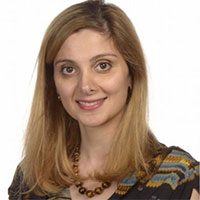This course is geared towards enabling Family Practitioners to better serve their multigenerational family based offices. In dentistry we often fall into the trap of looking at the ultra-focused picture of single teeth and identifying what disease processes are occurring, but a broader focus is also part of our purview as practitioners. It is in our armamentarium to prevent problems before they occur, to treat teeth that are not yet present, to guide an occlusion, to treat the whole smile which ultimately includes the whole face and patient.
This course will examine in detail the thorough process of screening patients, reviewing features to examine for both extra orally, intra orally, radiographically and upon clinical exam. Diagnostic record taking and keeping for orthodontics as well as diagnosis and treatment planning including extra oral and intra oral analysis, functional analysis, cephalometric analysis and timing of various treatments will be reviewed. We will go over ways to recognize what is within the scope of practice of the family practitioner and when to refer for a specialist opinion.
For those treatments within your scope of practice, and thus that ought to be in the tool-house of every family practitioner, the course will also review proper formulation of treatment objectives, treatment planning and informed consent for orthodontic treatment.
A brief overview of interceptive orthodontic treatment planning including a short review of appliances that can be in common use in a GP setting will be covered. Comprehensive orthodontic treatment planning, adult orthodontic treatment planning and retention will be touched upon.
Learning Objectives:
At the conclusion of this course, participants will be able to:
- Assess and analyze their patient base and know when an orthodontic issue may be arising or exists.
- Identify when the treatment falls within their scope of practice and how to treatment plan such cases, whether interceptive or comprehensive treatment.
- Screen and determine what is out of their scope of practice and when to seek further assistance for the patient by an orthodontist.
- Identify what diagnostic record keeping is required for orthodontic treatment and, in a cursory way, how to analyze these records.
- Describe what is involved in proper informed consent for orthodontic treatment.

